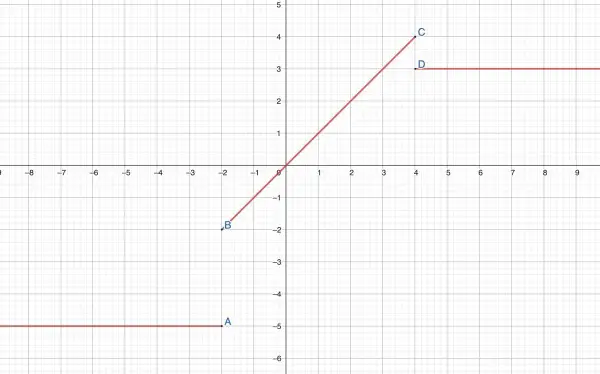f(x)=( -5 | x≤-2
( x | -2<x<4
( 3 | x≥4
This is a piecewise function. When x≤-2, f(x)=-5; when x is exclusively between -2 and +4, f(x)=x; when x≥4, f(x)=3. So there are three disconnected line segments. In the graph I've marked a few points (A-D) where A(-2,-5), B(-2,-2), C(4,4), D(4,3):

The segment BC is finite in length while the other segments are semi-infinite in length. In BC the x and y values are the same because y=f(x)=x. Points B and C are not actually included in the segment BC because they simply represent inattainable limits. The points A and D are discrete points. This is because of the inequalities in the expressions.